15.12.2020
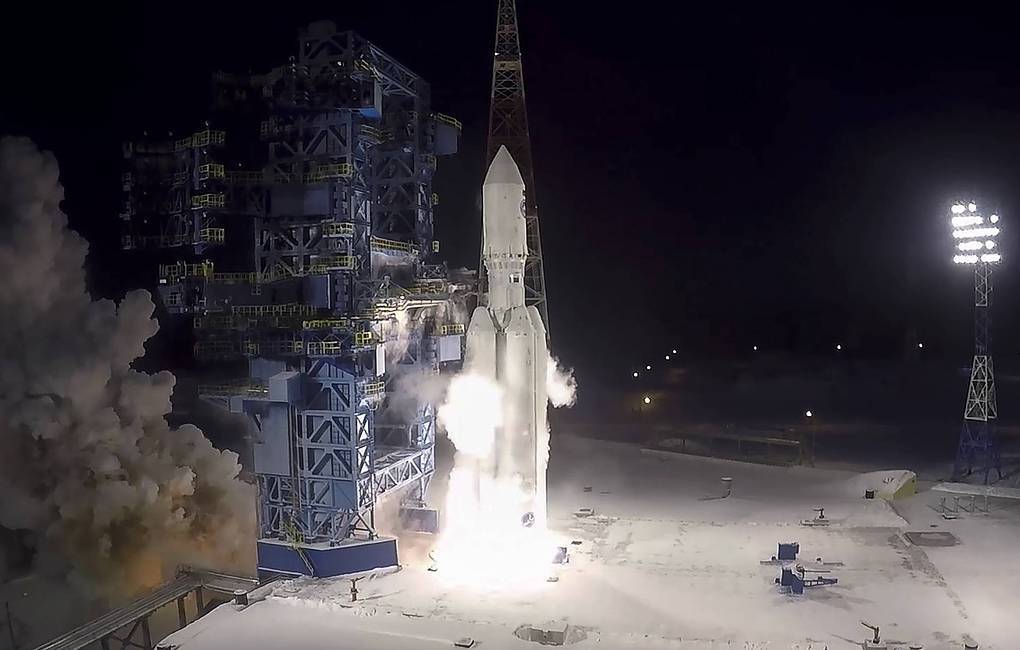
Russia’s Aerospace Force conducted a second test launch of the Angara-A5 heavy carrier rocket with a mass-size evaluation model from the Plesetsk space center in northwestern Russia on Monday, the press service of the Russian Defense Ministry reported.
"The operational crew of the Space Forces of the Aerospace Force performed a test launch of a carrier rocket of the heavy Angara-A5 class with a mass-size evaluation model," the military agency noted.
The rocket was launched at 08:50 Moscow time from the launch pad No. 35 of the Russian Defense Ministry’s State Testing Cosmodrome (the Plesetsk spaceport) in the Arkhangelsk Region. As the agency specified, all pre-launch operations and the launch proceeded in the normal mode.
"Ground facilities of the Space Forces of the Aerospace Force controlled the launch and the trajectory of the carrier rocket," the Defense Ministry added.
The Angara is a family of next-generation Russian space rockets. It consists of light, medium and heavy carrier rockets with a lifting capacity of up to 37.5 tonnes. The new family of rockets uses environmentally-friendly propellant components. So far, Russia has carried out only two Angara launches, both of them from the Plesetsk spaceport: a light Angara-1.2PP blasted off in July 2014 and its heavy version lifted off in December 2014.
Quelle: TASS
+++
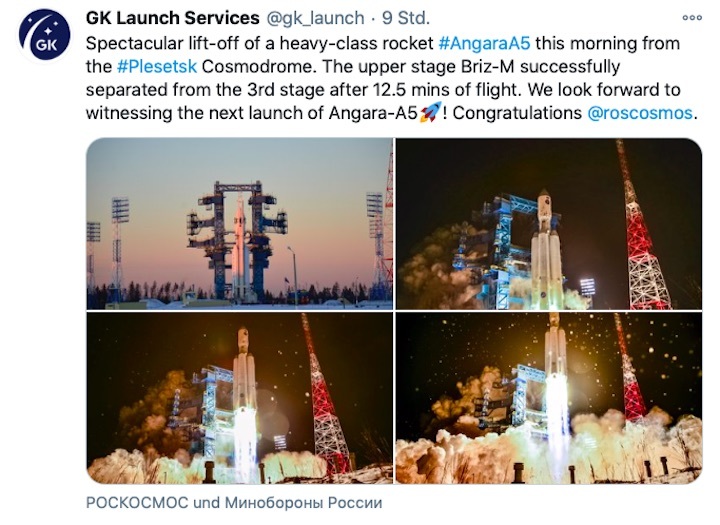
Quelle: Twitter
----
Update: 16.12.2020
.
Russia’s Angara A5 rocket successful in second test flight
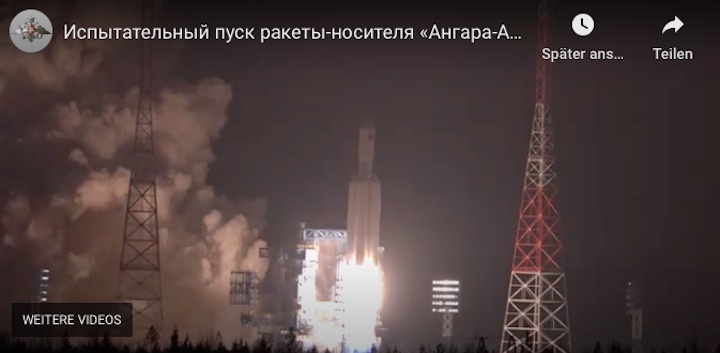
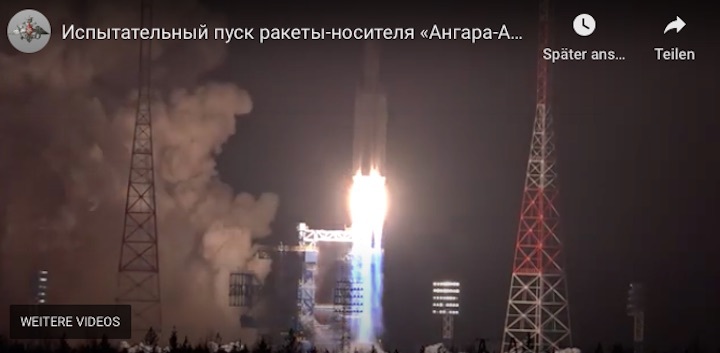
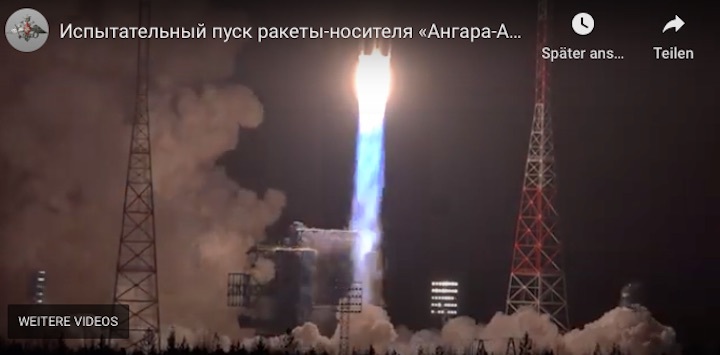

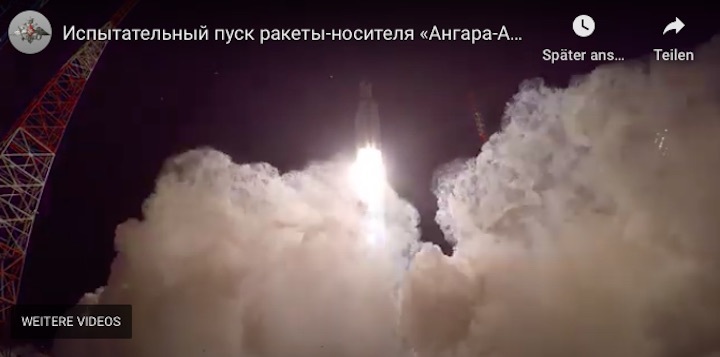
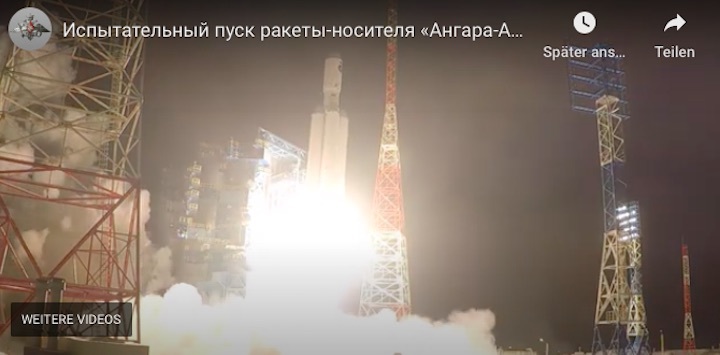
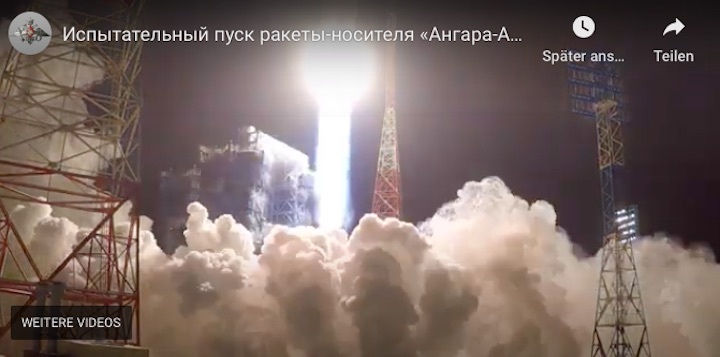
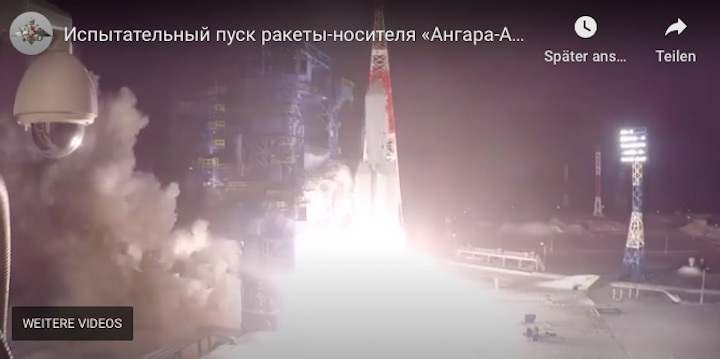
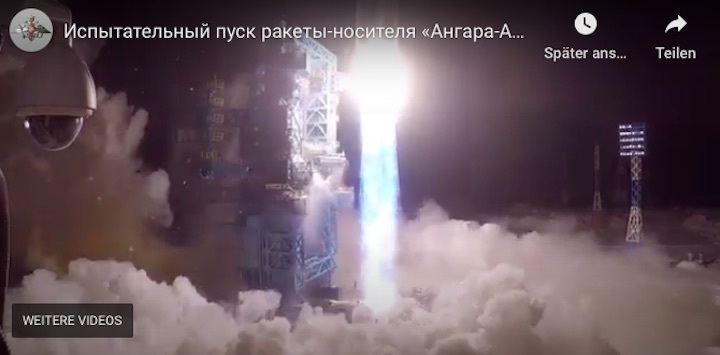
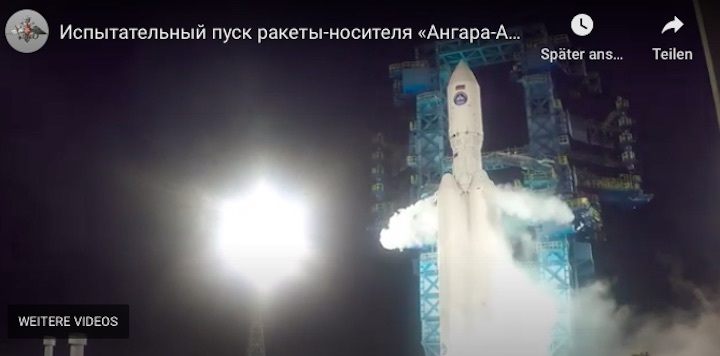
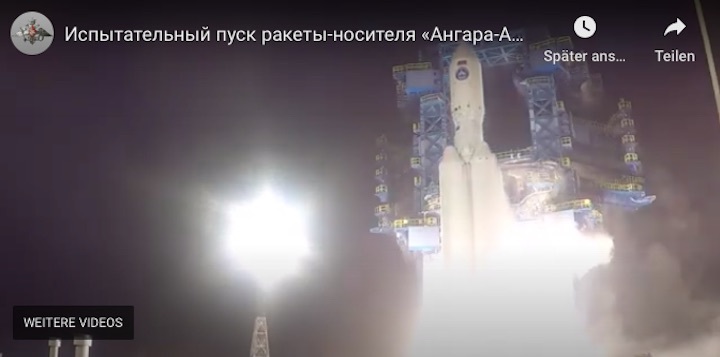
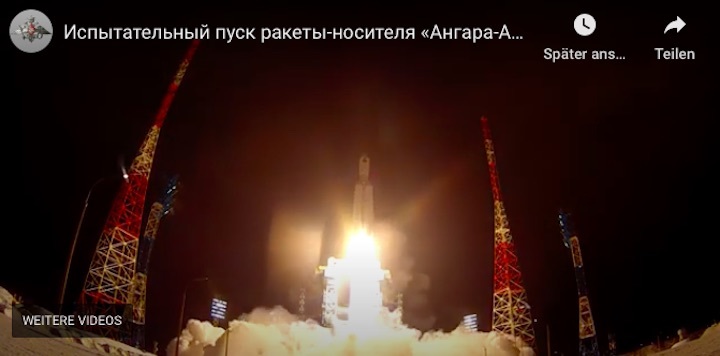
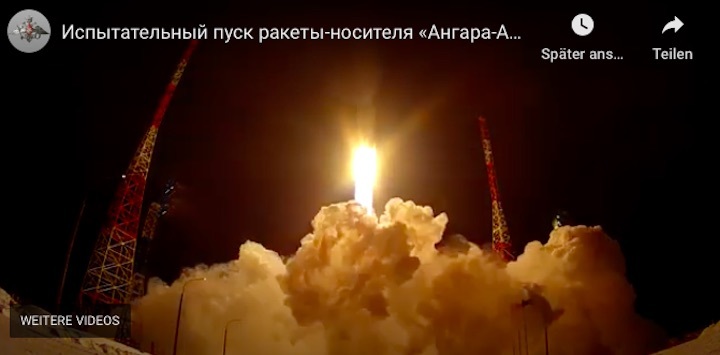
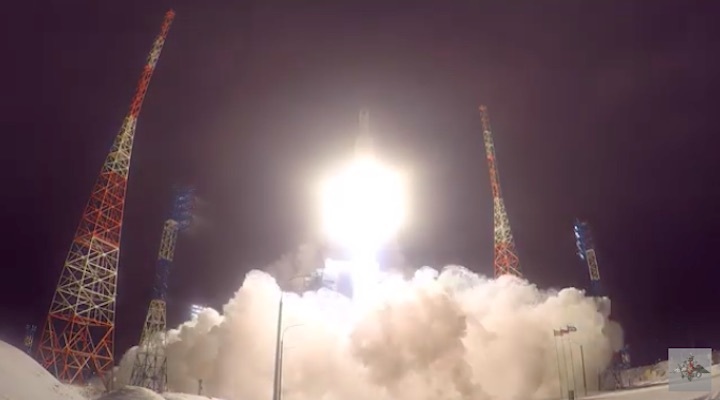
Six years after launching for the first time, a Russian Angara A5 heavy-lift rocket took off on its second test flight Monday and successfully delivered a dummy payload into orbit.
Russian officials confirmed the Angara A5 rocket and its Breeze M upper stage performed as intended during the test flight, which carried a mass simulator into orbit on a marathon nine-hour mission mimicking a mission profile that might be required by future Russian military and commercial payloads.
The Angara A5 is the most powerful new Russian launcher since the 1980s, and is designed to replace the Proton M rocket to carry the country’s heaviest payloads into orbit. But the program is years behind schedule, and despite a successful inaugural test flight in 2014, it took six years to launch a second Angara A5 rocket.
“She’s flying, damn it!!!” tweeted Dmitry Rogozin, head of Roscosmos, the Russian space agency.
Five kerosene-fueled RD-191 engines powered the heavy-lifter off its launch pad at Site 35 at the Plesetsk Cosmodrome, a military-run space base 500 miles (800 kilometers) north of Moscow in Russia’s Arkhangelsk region, at 0550 GMT (12:50 a.m. EST; 8:50 a.m. local time).
Generating more than 2 million pounds of thrust, the engines steered the Angara A5 rocket to the east from Plesetsk.
The Angara A5’s four strap-on boosters shut down and separated nearly three-and-a-half minutes into the flight. Then the rocket’s core stage, which fired its RD-191 engine at a lower throttle setting in the early phase of flight, powered up to full throttle to continue climbing into space.
The core stage — also known as the second stage — switched off its engine and dropped away from the Angara’s third stage nearly five-and-a-half minutes after liftoff. A kerosene-fueled RD-0124 engine ignited on the third stage and fired for nearly seven minutes.
The Angara’s payload fairing jettisoned early in the third stage burn, revealing the rocket’s dummy payload after climbing into space.
The rocket’s Breeze M upper stage separated from the Angara third stage at T+plus 12 minutes, 28 seconds, according to statements issued by Roscosmos and the Russian Defense Ministry. The Breeze M stage burned its engine four times, first to reach a parking orbit around Earth, then to move into a circular orbit more than 22,000 miles (36,000 kilometers) above the equator.
The Breeze M upper stage simulated a payload separation maneuver around 1500 GMT (10 a.m. EST), more than nine hours after taking off from Plesetsk, Roscosmos tweeted. The Breeze M was then expected to fire thrusters to maneuver into a “graveyard” orbit near the geostationary belt.

The second Angara A5 test flight, like the first mission in 2014, targeted a near-geostationary orbit close to the operating perches used by military and commercial communications satellites.
The Angara rocket family is designed to fly in several different configurations, depending on the mass of its payload and the targeted orbit.
The Angara A5 can place up to 24.5 metric tons — about 54,000 pounds — into a 120-mile-high (200-kilometer) orbit. On missions with communications satellites heading for geostationary transfer orbit, an Angara A5 rocket can lift up to 5.4 metric tons, or about 11,900 pounds, according to Khrunichev State Research and Production Space Center, the Angara’s prime contractor.
The Russian government gave the green light for development of the Angara rocket in 1992. After Khrunichev won the contract to design and build Angara, the Russian government stated the rocket should begin operations by 2005.
But funding difficulties repeatedly delayed the Angara program. Finally, in 2014, Russia performed the first two Angara test flights.
A single-core prototype of the light-class Angara 1.2 rocket — designed to loft smaller satellites — flew on a suborbital test flight in July 2014. The Angara A5 rocket debuted in December 2014, also successfully.
At that time, Russian officials said multiple Angara test flights were scheduled before the rocket was to become operational in 2020.
Russia did not meet that schedule. Since 2014, officials have opened a new Angara production facility in Omsk, Russia.
Engineers tested an engineering model of an Angara booster unit produced at the Omsk plant to verify the new factory is ready to begin full-scale production.
The Angara burns cleaner fuel than the Proton rocket it will replace, which consumes toxic hydrazine and nitrogen tetroxide propellants.
Responding to a question Twitter, Rogozin wrote that two Angara launches are planned in 2021. Those flights are believed to be the launch of a small South Korean Earth observation satellite on an Angara 1.2 rocket, and the third launch of the heavy-lift Angara A5 rocket, both from Plesetsk.
Russian workers are building a new Angara launch pad at the Vostochny Cosmodrome in Russia’s Far East, which could be ready for Angara launches there in 2023.
Once operational, the Angara A5 rocket will allow Russia to move some of its space launches from the Baikonur Cosmodrome, which the Russian government leases from Kazakhstan, to spaceports on Russian territory.
But there are concerns about the Angara A5’s costs, which Khrunichev said in 2019 financial statements will be lowered from $100 million to $57 million per flight by 2024, according to Russia’s Tass news agency.
That is comparable to the cost of a Proton rocket launch, Tass reported, but still more than the commercial price of a SpaceX Falcon 9 rocket.
Russian officials told the Tass news agency that the unit cost of an Angara rocket will come down as it begins serial production. Production and assembly work is currently performed at two sites — in Omsk and in Moscow — but will be consolidated in Omsk in the future.
Rogozin tweeted Monday that a rocket still in testing — like the Angara A5 — will inevitably be more expensive on a per-flight basis than a launch vehicle in full-scale production.
Quelle: SN
